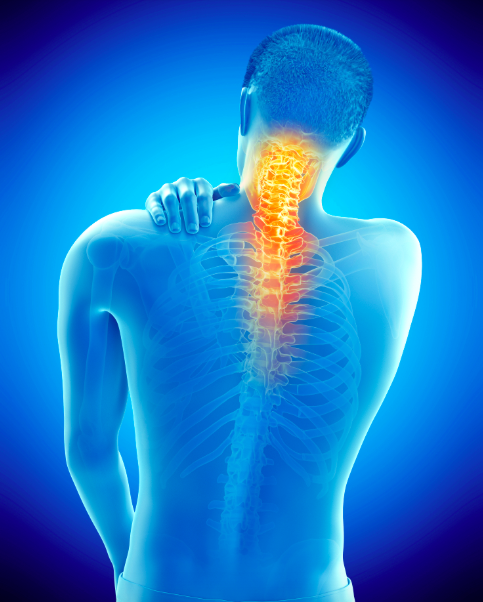FACET HYPERTROPHY
Causes, Recovery, and Considerations
What is Facet Hypertrophy?
Facet hypertrophy refers to a common condition characterized by unusual enlargement of the facet joints in the spine. New bone growth and bone spurs may also arise as the joint attempts to repair the damaged cartilage.
What are Facet Joints?
Facet joints refer to small, angular joints on either side of the ring-shaped bone surrounding the vertebral bodies. These joints prove important in stabilizing the movements of the spine. The angle and height of facets and how these structures sit on the vertebral segment determine the range of motion permitted at the vertebrae. This denotes that the degree of flexibility and the direction in which the spine can move varies for each region (such as the cervical, thoracic, upper back, middle back and neck regions).
In facet hypertrophy, the vertebral joints widen as the cartilage on the joints wears out. Cartilage protects the bone surfaces on these vertebral joints, thereby guarding the bones from friction. It also distributes the pressure evenly along the bone. Cartilage wear can occur, for instance, due to prolonged, excessive stress on the joints.
The swelling and growth of new bone may cause narrowing of the spinal canal, thereby compressing and irritating nerves and vessels nearby, causing pain. This condition does not have a probable cure, it exacerbates with time. The preferred treatment option includes how to manage the pain and slow disease progress. When left untreated, facet hypertrophy may contribute to spinal stenosis and radiculopathy, among other conditions.
Types of Facet Hypertrophy
Facet hypertrophy can occur in unilateral or bilateral types. These types vary in that one can feel the pain on either one side (unilateral) or both sides (bilateral) of the thighs, buttocks, and sides of the groin.
Causes
A prevalent cause of facet hypertrophy includes the age-related degeneration of the joints between the spine, known as spondylosis, with age as the major risk factor for developing this condition. Spondylosis often proves an inevitable consequence of aging.
Studies show that more than 80% of individuals 40 or older have radiologic evidence of spondylosis, even though these individuals may not have symptoms.
The following can also increase one’s risk of facet hypertrophy:
- Poor posture
- Sedentary lifestyle
- Genetic predisposition to the condition
- Inflammatory conditions such as rheumatoid arthritis or ankylosing spondylitis
- Osteoarthritis
- Injury or trauma to the spine
- Obesity
- Spinal fractures
- Repetitive twisting or bending
Comorbid conditions that affect the spine can also worsen facet hypertrophy and cause even greater pain. Disc degeneration, for instance, a breakdown of the cushioning discs between the spinal vertebrae, exerts pressure on facet joints. This speeds up the atrophy (degeneration) of the cartilage.
Symptoms of Facet Hypertrophy
Facet hypertrophy symptoms can occur within a wide range of intensity. Symptoms can vary from a dull ache to chronic, disabling pain. The location of symptoms depends on the location of the affected facet joint and the nerves involved.
Pain occurs when the swollen facet joints and new bones impinge on the nearby nerves. The result leads to nerve damage and the following symptoms:
- Numbness or a tingling sensation of pins and needles
- Burning pain
- Muscle weakness (hypotonia)
- Muscle spasms
- Reduced range of motion and mobility
- Stiffness, especially when standing up straight or getting out of a chair
The following symptoms occur in specific locations of the facet joint affected:
- Radiating pain from the affected joint into the buttocks, hips, and upper thigh when the condition affects facet joints in the lower back.
- Radiating pain from the affected joint into the shoulder, neck, and back of the head.
Treatment
Research has found no cure for facet hypertrophy. Treatment only aims to make the pain more manageable. Conservative treatment usually proves successful in making a difference:
- Physical therapy to strengthen the core muscles and spine
- Good posture habits
- Daily prescribed exercises to help you remain flexible
- Non-steroidal anti-inflammatory drugs (NSAIDs) such as aspirin, diclofenac, advil, and ibuprofen
- Muscle relaxers such as Flexeril (cyclobenzaprine) or Skelaxin (metaxalone)
- Injection of a steroid into the facet joints
- Acupuncture
- Massage therapy
Other forms of treatment may include non-conservative options such as medial branch or facet block, neurolysis (destroying the affected nerves through ablation), and surgery.
Believe you are suffering from Facet Hypertrophy?
Contact Longhorn Brain & Spine


